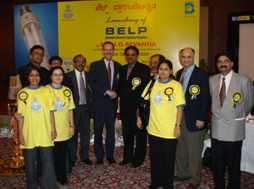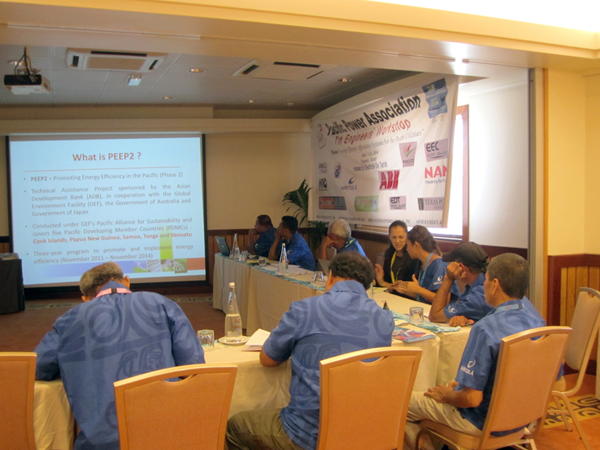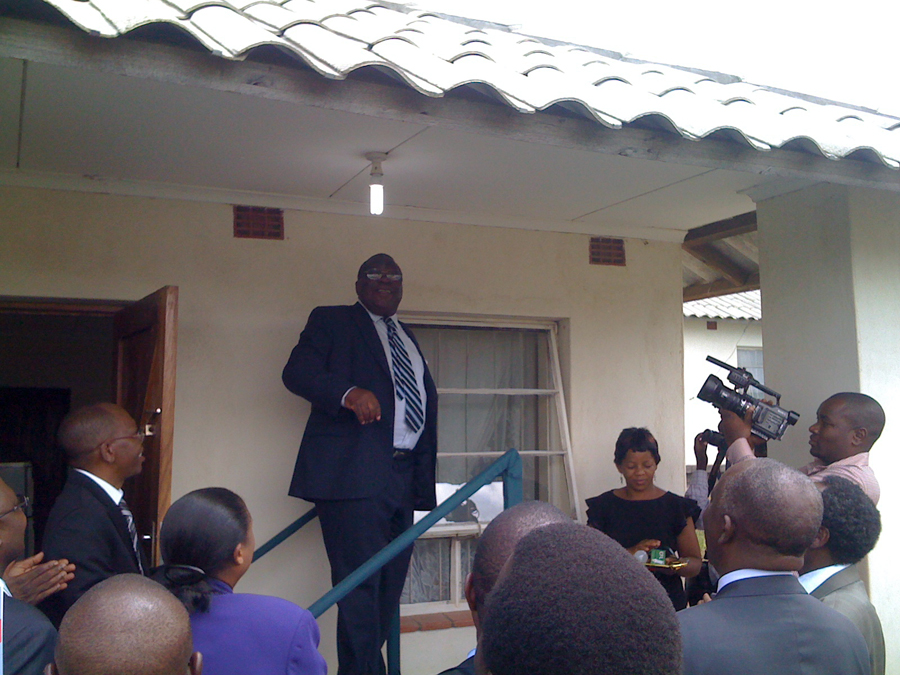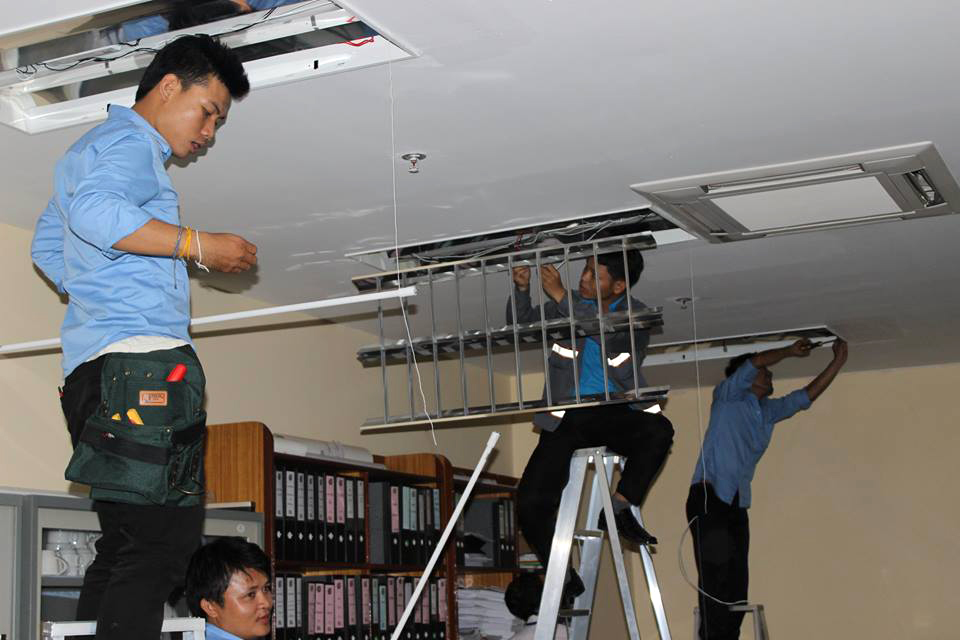Our Achievements
Energy Efficiency & Demand Side Management
Pacific Islands
In the Pacific Islands, IIEC is the lead implementer of the Promoting Energy Efficiency in The Pacific - Phase 2 (PEEP2) Project, funded by the Asian Development Bank (ADB). This project covers the Cook Islands, Papua New Guinea, Samoa, Tonga and Vanuatu, and aims to stimulate EE through demand-side improvements to energy use in each country’s residential, commercial, and government sectors. The project includes the development of an energy use database, EE policies, minimum energy performance standards (MEPS) for appliances, capacity building, and implementation of EE projects in residential, commercial and government buildings, as well as hotels and street lighting.
|
|
|
Malawi
IIEC designed and implemented a nationwide Compact Fluorescent Lamps (CFL) Program that replaced incandescent bulbs with 2 million CFLs in both the commercial and residential sectors. The verified demand savings of 65 MW during morning peak and 51 MW during evening peak enabled the utility, Electricity Supply Corporation of Malawi (ESCOM), to significantly reduce daily load shedding and connect an additional 18,500 new customers to the grid.
|
|
|
India
IIEC carried out the first large-scale market driven CFL program in India under the United States Agency for International Development (USAID)-funded Energy Conservation and Commercialization II (ECO II) Project. The project was executed in partnership with the Bangalore Electricity Supply Company (BESCOM) and resulted in peak demand savings of 17 MW over a nine-month period.

Formal Launching of the USAID-funded BESCOM Efficient Lighting Program (BELP), a part of the ECOII Project in Bangalore, India
Philippines
IIEC was contracted by the Philippine Department of Energy to implement the US$46 million Philippine Energy Efficiency Project (PEEP). Supported by a loan from ADB, the project included large-scale implementation of several EE and DSM components. Activities included energy efficient lighting retrofits in 135 public buildings, distribution of 8.6 million CFLs, public and street lighting projects in several cities, and development of a Green Building Rating Scheme. The project impacts, confirmed by the Philippine Department of Energy, included demand savings of 248 MW and annual energy savings of 321.75 MWh.
|
|
|
Lao PDR
IIEC contributed significantly to the Lao PDR Demand-Side Management and Energy Efficiency Project since its inception in 2004. Our main activities comprised implementing EE measures in public buildings, and a nationwide residential lighting program.
|
|
|
Thailand
The introduction of Light Emitting Diodes (LED) street lighting in 6 municipalities, under the ADB-funded Mainstreaming Energy Efficiency Measures in Thai Municipalities (MEET) Project, resulted in the development of a business model for municipalities to undertake EE and DSM activities in partnership with the electric utility, Provincial Electricity Authority (PEA). MEET acted as a scalable business model, advancing methods for increasing lighting efficiency across other Thai municipalities.
Vietnam
IIEC was the lead consultant for an ADB-financed project to identify potential EE improvements in large, energy-intensive industries. Primary industries targeted by the program were cement, chemical, steel, beverage, and plastic. The key outputs included an EE Project Finance Model and the identification of over US$100 million investment opportunities in the steel and cement industries in Vietnam.
Our Achievements at a Glance
| Country | Project | Funding Agency | Impacts |
| Global | Efficient Lighting Initiative (ELI) | IFC | Transition to high efficiency and high quality CFLs, fluorescent tubes, and ballasts in Argentina, the Czech Republic, Hungary, Latvia, Peru, the Philippines, and South Africa |
| Global | APEC Standards and Labeling Program | APEC | Establishment of baseline on energy standards and labeling in APEC economies Program enhancement for several existing appliance labeling programs |
| India | Energy Conservation and Commercialization II Project | USAID | Demand savings of 17 MW, with potential savings of 300 MW across Karnataka |
| India | Implementing Public Sector EE Project via Energy Service Companies (ESCOs) | World Bank | Energy efficiency projects implemented in 6 public sector buildings in 3 states |
| Lao PDR | DSM/EE Project – Phases I and II | World Bank | 10% reduction in energy consumption in rural households |
| Malawi | EE Lighting Project | UK Department for International Development | 51 – 65 MW peak demand savings, allowing connection of 18,500 new customers to existing electricity grid |
| Myanamar | Development of the National Energy Efficiency Policy, Strategy and Roadmap | ADB | Energy security for sustainable economic development in Myanmar |
| Pacific Islands | Promoting Energy Efficiency in the Pacific - Phase 2 (PEEP2) | ADB | Reduction of energy consumption in the residential, commercial and public sectors and establishment of policy frameworks for reduction of fossil fuel imports |
| Philippines | Philippine Energy Efficiency Project (PEEP) | ADB | Estimated savings of 248 MW demand and 321 GWh annual energy consumption |
| Sri Lanka | Implementation of Energy Efficiency Policy Initiatives | ADB | Development of roadmap for the promotion of quality energy efficient lighting technologies |
| Thailand | Mainstreaming Energy Efficiency Measures in Thai Municipalities (MEET) | ADB | 50% reduction in average energy consumption in public lighting; and expansion of LED street lighting to other municipalities |
| Vietnam | Implementation of National EE Program | ADB | Cost effective investment of US$100 million identified in 5 cement and 2 steel plants |
| Vietnam | Demand Side Management (DSM) Phase 2 Program | World Bank | 120 MW of peak demand reduction; 3,000 GWh of cumulative energy savings over 3 years (2004-2007); and reduction of 0.6 million tons of CO2 |









